Spinel
A relatively rare mineral belonging the oxide class.
Due to the great hardness (8 on Mohs' scale) and the indistinct cleavage Spinels make excellent and durable gemstones.
Spinel shop
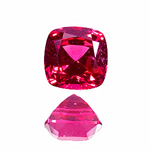
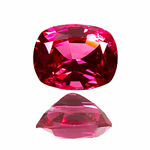
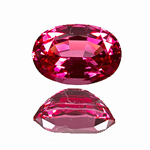
Three outstanding Spinels from Burma (Myanmar)
Furthermore a whole group of minerals of similar composition (AE2O4) is named after Spinel.
Some of the more prominent members of the Spinel Group are Chromite, Gahnite, Hercynite and Magnetite.
Origin of name: not fully explained.
The name "Spinel" might derive from the ancient Greek σπίν(ν)ος [spín(n)os] for spark or sparkle. Some say it derives from Latin spina or spinella for (little) thorn, alluding to its sharp octahedral crystals.
Sources: Wikipedia and mindat.org
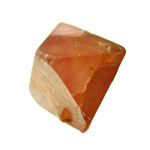
Synonyms and trade names: for centuries pink and red Spinels (and several other red gems like Garnet and Ruby) were termed Balas, from which derive trade names like Balas-Spinel, Ruby-Spinel or the most confusing Balas-Ruby.
Today these names are seldom heard but not fully extinct.
Gahnospinel: blue Spinel containing zinc
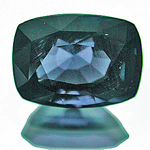
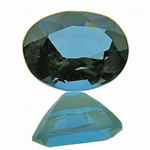
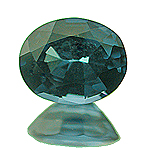
Three Gahnospinels from Sri Lanka
Pleonaste: iron rich opaque dark green, dark blue or black Spinel
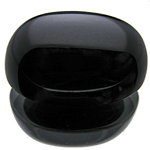
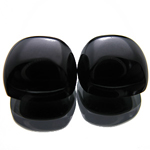
Black Pleonaste Cabochons, probably from Vietnam
Can be confused with: pink and red Spinels can be confused with several gemstones of similar colour e.g. Ruby, Garnet and pink or red Tourmaline (Rubellite). Blue Spinel can be confused with blue Tourmaline (Indigolite).
Distinction of singly refractive Spinel and doubly refractive Ruby or Tourmaline is simple.
To tell Spinel from equally singly refractive Garnet it suffices to measure the refractive index.
Localities: mindat.org lists more than 1400 deposits. The most important localities are Burma (Myanmar), Sri Lanka, Tanzania and Afghanistan
Handling: Spinell is one of the hardest gemstones and sports only indistinct cleavage, which makes it easy to work with and durable to wear.
We do not know whether it is susceptible to heat, acid and brine. However, in an old gemmological textbook we found an entry saying that all spinels except red and black stones change their colour for good upon heating.
Worth knowing: until the end of the 18th century, when scientists like Haüy, Lavoisier and Mohs (after whom the scale of hardness is named) laid the foundation for modern mineralogy, red Spinels and other red gems were bundled under the terms Balas or the even older Carbuncle.
In the course of time some of the most famous "Rubies" turned out to be Spinels.
Catherine The Great's Ruby, set in the Grand Imperial Crown, is a giant Spinel from Afghanistan weighing more than 414cts. The crown is displayed in the treasury of the Kremlin in Moscow.
The "Black Prince's Ruby", which, along with the famous Cullinan II Diamond and more than 3000 other gems, adornes the Imperial State Crown, part of the British crown jewels, is also an Afghani Spinel, weighing approximately 170cts.
The "Timur Ruby" really is a 361cts Spinel of unknown origin. It is set in a necklace and until 1851 was thought to be the world's largest Ruby.
Spinel is synthesized in large quantities by the Verneuil method. Until the emergence of CZ (cubic zirconia) colourless synthetic Spinel was a popular Diamond substitute.
Light blue synthetic Spinell was widely used as a subsitute for Aquamarine and is still frequently encountered. Diagnosis is usually no problem as all synthetic Spinels show strong anomalous double refraction which can easily be detected by use of a simple polariscope.
Spinel shop
 Deutsch
Deutsch